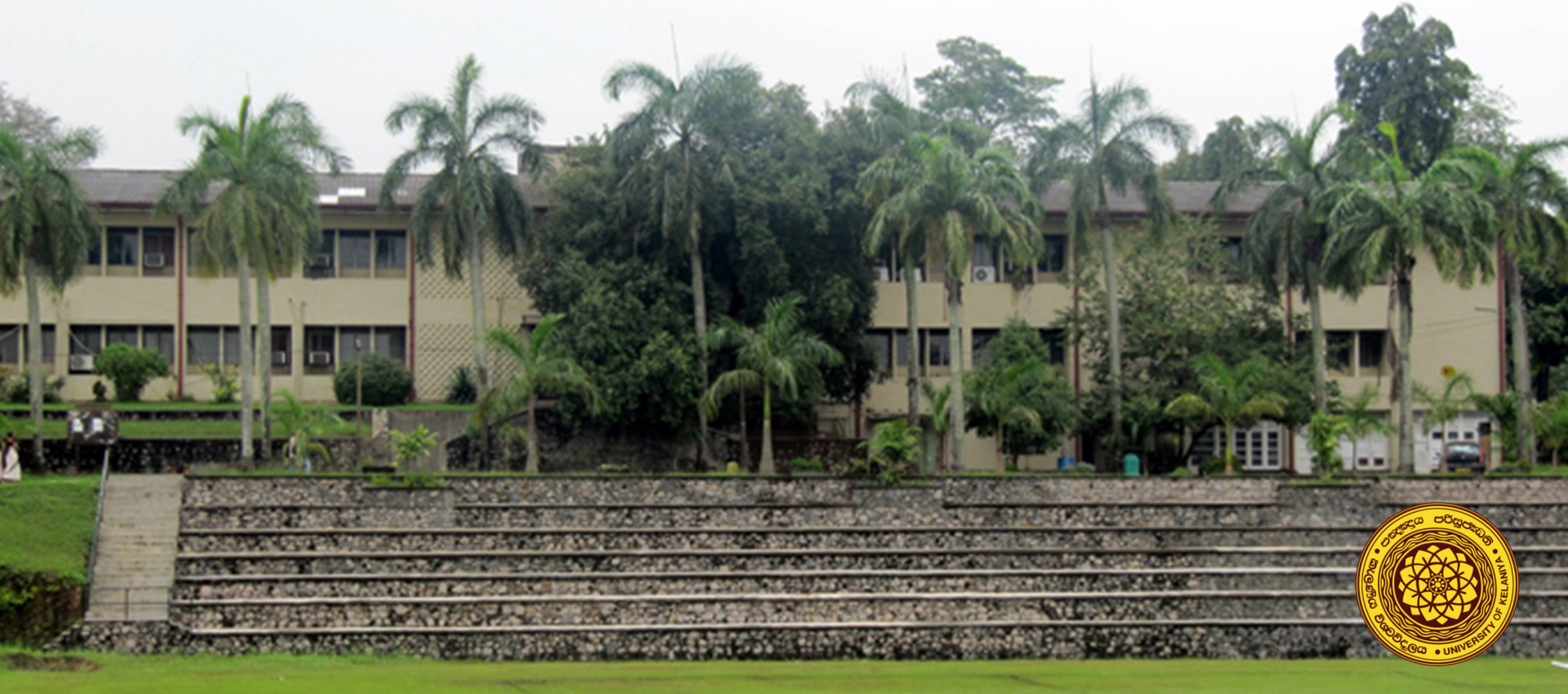Overview

The University of Kelaniya is committed to provide high quality education and to conduct high impact research which will contribute significantly to the enhancement of existing knowledge in various fields of Humanities, Medicine, Science, Social Sciences, Commerce & Management and to the development of the country.
History
The University of Kelaniya has its origin in the historic Vidyalankara Pirivena, founded in 1875 by Ratmalane Sri Dharmaloka Thera as a centre of learning for Buddhist monks.
With the establishment of modern universities in Sri Lanka in the 1940s and 1950s, the Vidyalankara Pirivena became the Vidyalankara University in 1959, later the Vidyalankara Campus of the University of Ceylon in 1972, and, ultimately, the University of Kelaniya in 1978.
The University of Kelaniya has pioneered a number of new developments in higher education. It was one of the first universities to begin teaching science in Sinhala and the first to restructure the traditional Arts Faculty into three faculties: Humanities, Social Sciences, and Commerce and Management.
It has several departments not generally found in the Sri Lankan University system and some Kelaniya innovations have been adopted subsequently by other universities. These include the Departments of Industrial Management and Microbiology in the Faculty of Science; Departments of Linguistics, Fine Arts, Modern Languages and Hindi in the Faculty of Humanities; and Mass Communication and Library and Information Sciences in the Faculty of Social Sciences.
Faculty of Science
The Faculty of Science started functioning in October 1967 with Prof. Charles Dahanayake as the Dean of Science. The intake of the first batch of students was 57. Formal approval for the faculty was given by the Minister of Education in 1968.
The science faculty was housed in the main building known as the "Science Block". Due to the continued increase in the student intake from year to year, a new lecture theatre complex and an auditorium were constructed in 1992, which enabled the intake of students to be increased to 450 in 2003. A new laboratory complex for the Chemistry Department and three buildings for the Departments for Industrial Management, Microbiology and Zoology have now been completed.
The science faculty was the first among the Sri Lankan universities to initiate the changeover from the traditional three subject (General) degree with end of year examinations to a more flexible course unit system, i.e., a modularized credit-based system in a two-semester academic year with the end of semester examinations. It offers a variety of course pathways designed to provide flexibility in the choice of subjects. Under this system students have the option of reading for a traditional three subject degree or for a degree consisting of two principal subjects and a selection of course units drawn from other subject areas. The BSc (Special) degree courses, begun in 1974, adopted the course unit system in 1986.
Currently, Prof. Sudath Kalingamudali is the dean of the faculty of Science.
The faculty consists of eight departments.
- Department of Botany
- Department of Chemistry
- Department of Industrial Management
- Department of Mathematics
- Department of Microbiology
- Department of Physics and Electronics
- Department of Statistics & Computer Science
- Department of Zoology & Environmental Management
Faculty of Medicine
The Faculty of Medicine of the University of Kelaniya is on a 35-acre (140,000 m2) campus at Ragama.[2] It is one of eight medical schools in Sri Lanka. The faculty began classes with the admission of 120 students in September 1991 after the government, in 1989, nationalised the North Colombo Medical College (NCMC), the first privately funded medical school in Sri Lanka established in 1980. The first batch of students, of the Faculty of Medicine, University of Kelaniya completed their five-year course and graduated MBBS in September 1996. Prof. Carlo Fonseka was the first dean of the faculty. Subsequent deans were Prof. Janaka de Silva, Prof. Rajitha Wickremasinghe, Prof. Nilanthi de Silva and Prof. Prasantha S. Wijesinghe. The current dean is Prof. Janaki de S. Hewavisenthi.
The faculty now has over 1,000 medical students. This number includes international students, mainly from other South Asian countries, who have been admitted on a fee-levying basis. The faculty also welcomes students for elective appointments. Students from medical schools in Europe, USA and Australia have spent their elective periods with the university. In addition to the MBBS course, it conducts a BSc programme in speech and hearing sciences.
There is a permanent academic staff of over 120 and in addition 40 temporary academic staff and over 60 visiting staff that includes consultants who are based in the affiliated teaching hospitals.
Faculty of Social Science
The Faculty of Social Sciences, in student population, is the largest faculty in the University of Kelaniya.
Department of Library and Information Science
Faculty of Humanities
The faculty includes disciplines associated with Buddhist and Asian cultures, such as Pali and Buddhist Studies, Sinhala, Tamil, Sanskrit, Hindi, Japanese and Chinese, while teaching courses in modern European languages such as English, French, German and Russian.




